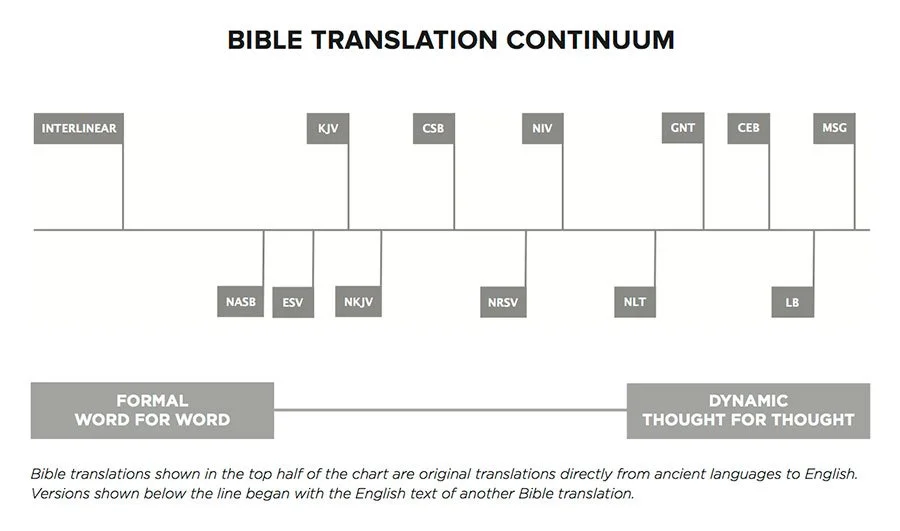What Made Your Bible
I think at times it is really easy to take the Bible for granted. In a previous post, we touched on that from the perspective of the people who risked their lives to preserve the Bible. It goes even deeper than that. The documents that these men and women risked their lives to save also had to be preserved in their own right. Biblical manuscripts are the most copied and ancient text by a long shot. Not only are the sheer number of manuscripts amazing, but the margin of time from when the documents were written and the events that originally occurred are staggering. No other text exists like the Bible.
Personally, it has changed my life to learn more about the Bible manuscripts. Such as the geography of the manuscripts, textual criticism, etc. It not only has helped me to develop a deeper understanding of the texts, but also a new appreciation for the text that sits in my hands each day. When you consider everything that had to take place for the Bible to become what it is today, it is almost impossible to not find appreciation towards it. We’re going to take a deeper look at some of these manuscripts and how they were formed into the translations that we have today.
Textual Criticism
Geography, date, context, all of this is considered when a manuscript is used to develop a translation. There are three main textual criticisms when it comes to Bible translations: the Textus Receptus (or the Received Text), the Majority Text and the Critical Text. The Textus Receptus is formed by a handful of Byzantine based Greek texts that Desiderius Erasmus used to create a translation of the New Testament that later became the King James Bible translation (textusreceptusbibles.com). Erasmus used only a few documents, contrary to the other two methods of textual criticism that take advantage of the multitude of Biblical manuscripts that we have access to today. Although, in the 16th century this is all that was available at the time. So, this method is held in high regard because of its level of accuracy combined with the few number of resources that were available.
The next form of textual criticism is the Majority Text. Unlike the Textus Receptus where it is a few specific texts, this form of textual criticism takes more of a systematic approach. It looks at all of the manuscripts available. When there is a discrepancy between the texts, this method sides with the most common words used. An example of this is if there are 1,000 manuscripts of the Book of John and 800 of them say “he said” while 200 say “Jesus said,” the Majority Text will go with the “he said” because of that phrase being found more often.
Finally, we have the Critical Text, sometimes called the Critical Method. Many of our modern day translations, like the ESV, uses this method of textual criticism. The Critical Text takes a different approach to textual criticism altogether. It not only looks at the volume of manuscripts, but also looks at the geography, where the manuscripts were found, location of the manuscripts in relation to other manuscripts, the date of the manuscripts, etc. This process of textual criticism takes a much more comprehensive approach compared to the other two.
Byzantine vs. Alexandrian
There are four major categories that most manuscripts fall under and they are based on geography: Alexandrian, Byzantine, Caesarean and Western. The most common and most relevant are the Alexandrian and Byzantine manuscripts. The Alexandrian manuscripts come from the Christian community in Alexandria, Egypt. These manuscripts are much older than Byzantine manuscripts, generally dated around the 4th century AD (e.g. Codex Sinaticus and Codex Vaticanus). Although, there are very few Alexandrian manuscripts compared to Byzantine manuscripts. Byzantine manuscripts originate from the Byzantine Empire and are dated around the 9th century AD. So, you have a large quantity of manuscripts that have little textual variation, yet they aren’t as old compared to the Alexandrian that are much closer to the source material; but, have a lesser quantity of manuscripts to work with.
The Byzantine text is the basis of the Majority Text, because there are so many pieces to work with. In 1516, Erasmus used Byzantine texts to develop the Greek translation of the New Testament that went on to become the King James Version and other translations alike, which is also called Textus Receptus, or the Received Text. The Alexandrian manuscripts are what we associate with the Critical Text that is used in more modern translations like the English Standard Version.
Both Byzantine and Alexandrian manuscripts differ in text-type. Meaning, they have distinct characteristics regarding the wording used in their texts that define them. The Byzantine text-type is known for having more wording in their manuscripts, possibly to improve its literary style. Similar to what we do today with English translations and balancing formal and dynamic equivalency (more on that below). In contrast, the Alexandrian texts are more abrupt with less wording, which makes it seem as if these manuscripts are more closely related to the original manuscripts. But, this is debated because it is believed that the Byzantine text-type was quoted in early church fathers’ work around the 4th century and even possibly the 2nd century.
Thought for Thought or Word for Word
More access to manuscripts, and more sources for text criticism allows for a wider range of translations. Most popular translations can fall in the two camps of thought for thought and word for word translations.
Both styles of translations have their place and weigh out equal pros and cons. A lot of it is preference but there are some important distinctions. The word for word translations are going to have a very accurate translation from the original manuscripts and read more true to the original writings. Yet, this may make it harder to read in our modern time. On the flip side, the thought for thought translations are going to read a little smoother and use language that fits our modern day vernacular. With that, thought for thought is at risk for compromising the original ideas that the authors intended to convey.
Earliest Manuscripts
There are many reasons for the Bible to astound us. The amount of manuscripts still intact, the small amount of textual variance between texts, the vast geographical locations of the manuscripts, and the margin of time between the source material and the first copies. It blows my mind to learn of the many manuscripts, especially the New Testament manuscripts, that date so close to the original writings, which date very close to the time of Jesus. There are many manuscripts to look at but one in particular that I find very interesting is a document called P52. It’s dated from 125 AD, whereas the original Book of John is widely considered as being written in 90 AD making it a 35 year copy. Pretty amazing when you consider most non-biblical texts are normally copied hundreds of years after the original. The other cool thing about this is that it is actually a small fragment from the Book of John. And when I say small, I mean it. It’s been said that P52 is actually a pocket size version of John and it was found in Egypt. Meaning that within thirty years of the original writing, the Book of John had been developed into pocket size versions and had reached as far as Egypt.
Rylands Library Papyrus 52
Dead Sea Scrolls
In 1946 an amazing archaeological and Biblical discovery was made. The Dead Sea Scrolls were found in the Qumran Caves in the West Bank. According to the Smithsonian Magazine, these caves contained over 15,000 fragments from around 850 scrolls (Andrew Lawler, 2010). These scrolls were dated from the 3rd century BC to the 1st century AD, and much of what we have today in regards to manuscripts (i.e. Byzantine and Alexandrian texts) are validated by these Dead Sea Scroll fragments because they match the manuscripts dated later. Check out this link to view the actual scrolls digitally: Dead Sea Scrolls
Conclusion
There’s so much more that I couldn't even begin to scratch the surface with when it comes to manuscripts and textual criticism of the Bible. This is only an appetizer to the main course, or rather, courses. There’s a lot more research that you can do on your own. The goal of this post is to pique your interest and to show you the miraculous way that God ordained the transmission of the manuscripts down throughout time. I hope that this gives you renewed reverence for the Word of God. And when you pick up your Bible everyday you wouldn’t take it for granted. That you would see the beauty and majesty that is the Holy Bible.


